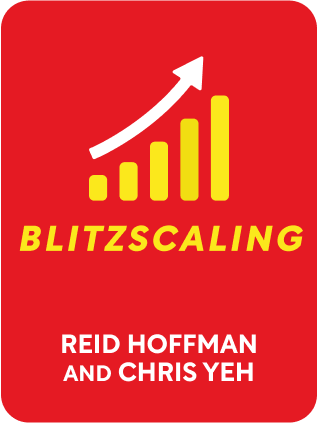

This article is an excerpt from the Shortform book guide to "Blitzscaling" by Reid Hoffman and Chris Yeh. Shortform has the world's best summaries and analyses of books you should be reading.
Like this article? Sign up for a free trial here .
Are you thinking of blitzscaling your company? If you blitzscale, when is the right time to stop? How do you blitzscale?
Blitzscaling companies isn’t always the answer, sometimes the conditions aren’t right. But when speed is the critical strategy, blitzscaling is the answer. However, you should only blitzscale your company for a limited amount of time because your company will eventually outgrow the strategy.
Continue reading to learn more about blitzscaling companies.
Is Blitzscaling Right for Your Company?
The only time blitzscaling companies makes sense is when speed into the market is the critical strategy to achieve massive outcomes.
You should not blitzscale if you’re not a product/market fit, your business model doesn’t work, or if the market conditions aren’t right. If taking on cost, risk, and speed don’t actually confer an advantage, it’s better to follow traditional business rules and wait for the time that blitzscaling becomes appropriate.
Blitzscaling also makes sense in a few other specific conditions:
- Big new opportunity
- Market size and gross margins create enormous potential value, and there isn’t a dominant market leader.
- Often, this is when a technological innovation upends existing markets, creating large opportunities that incumbents are not well-suited to capture.
- First-scaler advantage
- These opportunities often involve positive feedback loops. The mechanisms that confer the first-scaler advantage include network effects, returns to data, economies of scale.
- Blitzscaling often doesn’t work if another company has a first-scaler advantage.
- Amazon and Yahoo! attacked eBay with their own auction marketplaces, but they failed due to eBay’s strong network effects.
- Amazon and Microsoft attacked Google’s search engine, but they failed due to Google’s strong advantage in aggregated data and user experience.
- Don’t confuse first to market or first to significance with first to scale. You could be the inventor of a product, but a rival can take the reins and scale to make you insignificant.
- Competition
- Can somebody else realize this opportunity earlier than me? If yes, moving faster reduces the risk of competition.
- Note that your competitor might not be in the same country as you. Geographic boundaries have dissolved – your competition can now be global.
- Startups who act quickly can evade incumbents who aren’t focusing on the space.
When Should You Stop Blitzscaling?
Blitzscaling is like fighter jet afterburners – you don’t switch them on and never turn them off. Blitzscaling is used for a specific purpose for a limited time, after which you turn to fast scaling or another type of company growth.
You stop blitzscaling when your business outgrows your current strategy. Warning signs of when this is:
- The declining rate of growth (relative to market and competition)
- Worsening unit economics
- Decreasing per-employee productivity
- Increasing management overhead
All of these tend to signal that you’ve reached the ceiling of the market. When you’re moving fast, it’s easy to overshoot, as Groupon did when its daily deals model suffered, and as Twitter did when it overstaffed.
Do I Have to Blitzscale?
No. The French Laundry is still a single restaurant. If it’s antithetical to your mission, or you don’t want to deal with the headaches of a larger size, you don’t need to blitzscale. If you own the company, it’s up to you to do what you want with it.
Your industry may not have a winner-take-all dynamic. This can be true if the industry is very fragmented, has low margins, or little economy of scale. In this case, there is no purpose in blitzscaling, since there are fewer advantages to getting big.
Likewise, your business model may not be permissive of massive scale.
How Blitzscaling Works
Blitzscaling is not a strict sequence of steps:
- Do things that don’t scale.
- Achieve scale.
- Stop doing things that don’t scale, and do things that scale.
Rather, blitzscaling is iterative. It requires finding new things that don’t scale while you capture the value of existing things. The sequence of steps looks more like:
- Do things that don’t scale.
- Reach the next stage of blitzscaling.
- Figure out how to do one set of things that scale, while somehow also finding a way to do a completely different set of things that don’t scale.
- Reach the next stage of blitzscaling.
- Repeat until you dominate the market.
- [Repeat 1-5 for the next market you want to take.]
Examples
- Apple did this first with iPod, then iTunes, then the iPhone, then the iPad.
- Facebook did this first with desktop, then mobile.

———End of Preview———
Like what you just read? Read the rest of the world's best book summary and analysis of Reid Hoffman and Chris Yeh's "Blitzscaling" at Shortform .
Here's what you'll find in our full Blitzscaling summary :
- How to build a company that grows to a large size very quickly
- Why you have to ignore efficiency and profit for speed
- How companies like Facebook, Uber, and Airbnb were able to blitzscale






